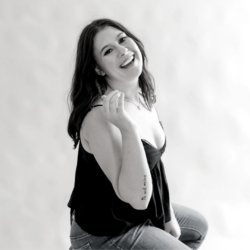CWco. team post by Meghan Lamle
Trend Forecasting has become a trend itself lately. The idea that, as a consumer, you could predict the future and then capitalize on it is very appealing. In addition, the rise of trend-based technology reminds us that getting ahead of the general population can help us share our impact with more people and become a household name.
Forecasting is the intersection between consumer behavior (studying why and how people are buying things) and the systematic nature of human behavior. Learning to understand past performance and patterning of human behavior allows you to identify the upcoming trends. As humans our nature can only be changed by massive force, that comes, in part at least, from a collective buy-in to things like new trends.
Before diving into the anatomy of trends and how to create your own trend forecast, let’s frame human behavior. We crave natural patterns, and often, the pattern we seek is the one of least resistance (taking the easiest way) . Or one of relying on something that is…well, reliable. If something is sturdy and works in nature, our nature is to repeat the pattern. This is called a fractal — a never ending repeating pattern that is sourced from an objection or set of objections.
Because of fractals, when trend forecasting, pattern recognition is a key skill. Pattern recognition is tied to an essential part of the brain called mirror neurons. These neurons are designed to see an action happening such as talking, walking, or a basic mannerism, and identify ways to replicate it. Mirror neurons (and patterning) allows us to feel a sense of belonging, because we feel connected to those we’re mirroring.
Here’s an example: Mirror neurons are responsible for babies teaching themselves how to walk through mimicry. There is no five step guide for babies on how to walk just like their parents. Instead, mirror neurons allow babies to not only observe, but also create the action they are mimicking.
Human nature is full of patterns, repeat actions and the idea that if something is good — don’t reinvent the wheel. This is why trends have their own anatomy and timelines.
Understanding recurring patterns are key to understanding trend forecasting — and that trends can and will repeat themselves. This is seen in colors, fashion, music and recurring events in history. Good trend forecasting not only about studying what is going to happen, but also what has already happened.
Anatomy of a trend
Point of Origin
All trends have their own anatomy, which allows you to identify the trend, it’s point of origin, and the trajectory of the trend — whether it is trending upwards (meaning gaining momentum) or trending downwards (also know as a fad).
Trends have a point of origin which means there is a clear starting point of the trend. Some examples that we see in our daily lives include the pantone color of the year, celebrity fashion, or even someone of influence recommending a book. There is one moment where the idea became a trend.
There are both known points of origin and unknown points of origin. A known point of origin acts as a line connecting the starting point of the trend to its current trajectory. Known points of origin are seen more often in cyclical trends such as fashion. For example, bell bottom pants have come in and out of style several times over the last 5 or so decades. A known point of origin can be referred to as the inspiration point.
An unknown point of origin creates the illusion that a trend just popped up out of nowhere. There is an indirect correlation between the point of origin and the existing trends. An unknown trend can feel random and can even lead consumers confused as to why this item would be trending. A clear example of this was the resurrection of Crocs back into the closets of Gen Z consumers. Our observation is that this trend popped up overnight, when actually, it’s an accumulation of other trends or ideas that now positioned the trend as an original idea.
Familiarity
Human behavior is not immune to fear of change. The brain is constantly scanning for stimuli to be able to see the change because your brain understands that new could mean dangerous. With this constant process of scanning, the level of familiarity is apparent in all trends. When a trend is foreign, this creates a higher level of fear of change. This will stop the customer from adopting it because that fear of change comes with extra effort of processing the change, in addition to adopting the behavior.
Familiarity — and sometimes the illusion of familiarity — allows fear of change to dissolve and the trend becomes a novelty (and adoptable) to the consumer.
Think about it this way — When a new phone, computer or smart device comes out, it’s a mimicry of something that existed in our daily lives already. For the computer, the keyboard was mirrored the same way a type writer was. For the phone, the keyboard was adopted. For new smart devices, they look like watches that we have worn for hundreds of years. That level of familiarity makes the adoption of the new product easier, which is key in the trend spreading.
If the trend is too familiar or similar to what already exists in the current market, the brain will tune it out — because it’s not novel. When thinking about the difference between something that is or isn’t novel, consider: the trend needs to have a quality that is not normal to allow the brain to be curious about why it is different. This will open a mental loop in the brain which systematically triggers you to close the loop in your brain by getting familiar with the trend.
This is why you lay in bed at night thinking about things over and over. The loop (whatever the thing is that has your mind spinning)has not been closed, which causes the brain to obsess over it. Your brain desires a sense of completion in all areas of your life.
It’s the same with trends: what starts the adoption process of the trend, is what triggers the popularity of the trend.
Adopting Current Trends
When it comes to adopting trends, and within every trend, there’s a level of sophistication.
When a consumer is more sophisticated, the consumer has more knowledge around the topic or idea at the center of the trend. When the consumer ha sa high level of knowledge around the trend, the adoption of the trend is centered on why the trend is an improvement to the norm
When there is a lower level of knowledge or low sophistication, the consumer will need more gaps filled (information) on what the actual trend is and why it is working.
When a low level of knowledge is present it can signal to the brain that this item is new or that this trend is different from what is the standard. When working with a low level of knowledge, the explanation is centered around identifying the trend itself. This is very common on new social media platforms, in books, or other areas that use the agile process of constant improvement.
The only way to grow a level of sophistication across a whole group of people is to show that adoption of the trend is happening at the same time.
When it comes to adoption, it is important to consider the percentage of the population that has adopted the trend already. Adoption, in this case, means that they have seen it, and taken action on it. It’s key for groups with low levels of sophistication to see that the trend has been adopted by the first percentage of people, who tend to be people sharing the trends. Those who are first to adopt trends are called Early Adopters. Early adopters are willing to try new things, stand in lines and take pride in being some of the first people to do or have something. An example of this was when the first iPhones came out and people were camping out to get them.
Trend adoption relies heavily on the users too, meaning that when there is a low barrier to information and higher level of sophistication throughout the population, the trend will catch on faster. Trend cycling is something that has increased with the rise of social media like Tik Tok.
How to forecast your own trends
Good forecasting comes from listening. The easiest way to start forecasting is to listen with an understanding of consumer behavior. Places to look for answers (also called social listening) can be platforms like Instagram (and other forms of social media) or sites like answerthepublic.com. This social listening keeps you in tune with the developing needs of consumers, which allows you to solve their problems better.
With trend forecasting, there is an opportunity to be wrong — ultimately, we can’t know the future. However, through patterns, social listening, and just sometimes just intuition, you can take an educated guess on what can be the next trend, and then back it up with evidence.
Some of my favorite resources for trend monitoring are:
- Trend Hunter
- DTC newsletter
- Non-Obvious Mega-Trends: How To See What Others Miss and Predict The Future
- Create the Future + the Innovation Handbook
If this is something you are interested in learning more about, there is a whole trend forecasting training inside the Curate Community Membership. Click here to start your trial today.

